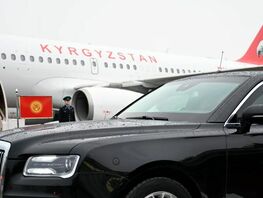By the end of 2017, the GDP growth in
GDP — low base and slowdown by the end of the year
The economy of
In 2017, the mine worked steadily, so the growth in the first half of the year was significant. Yes, the economy grew, but only in comparison with the minus values of the last year. Analysis of the indicators of a more stable 2015 year showed that there is no occasion for rejoicing. 12.5 percent drop was recorded.
This continued until September 2017. The gap between the data of 2017 and 2015 was reducing, but GDP growth was no longer so «rash.»
In August 2017, the gross domestic product was exactly the same as two years ago. But this is already a victory. The economy recovered from the shock of joining the Eurasian Economic Union and the regional crisis that coincided with it.
GDP showed the real growth only in September 2017 — 1.5 percent compared to 2015. But by that time and in comparison with 2016, it had been growing not so fast — by a quite reasonable 5 percent.
But there is also a fly in the ointment. In the second half of 2016, gold production at Kumtor returned to its previous positions, and the curve of the country’s GDP decline turned into a growth curve.
«If we speak about GDP this year, at the beginning of the year the figures were very impressive — the growth was more than 7 percent. Now the figure has become smaller, we are growing at around 4 percent. But this is due to the fact that the GDP is influenced by Kumtor, and its high performance at the end of 2016 is now somewhat smearing the economic statistics,» the former Vice Prime Minister of Kyrgyzstan Oleg Pankratov believes.
Following the results of 11 months of 2017,
This is a significant risk. The economy has no reserve for the future. It still depends significantly on Kumtor’s indicators. In 2018, gold production at the mine will decrease, so that the current GDP growth can also quickly turn into a fall.
Industry grows for the 1st time
«This year, the indices of industry are encouraging. It showed growth of more than 12 percent. It says that the economy is transforming. And it happens exactly as expected. If earlier we saw the development of the services and trade sector, and the population received a lot of income from re-export shipments, today the economy is being reformed, and the bias towards industrial production is forming,» stressed Oleg Pankratov.
In terms of industrial growth,
Adaptation of industry to the new conditions and rules of EEU is best seen in the growth of production in the textile and food industries. Light industry felt good even before EEU joining by
But the food industry began to revive after 2015. By the end of 2017, the production volumes of canned fruits and vegetables increased significantly.
Sugar production has been pleasing the eye for the second year in a row. In 2016, the farmers planted and harvested so much sugar beet that Kaindy-Kant plant worked until February 2017.
The second sugar factory Koshoi was launched after upgrading. This eased the situation. But all the same, there were kilometer-long queues at the beet pick-up centers. Both plants are still working — the reserves of the raw materials received are large.
Kumtor problem resolved
Kumtor project is the main economic support, a headache and a favorite toy of politicians. Without it, the budget of
One of the main events of 2017 was the signing of a new agreement on Kumtor between the government and Centerra. And let many experts say that this is not the point in a series of scandals, disputes and revisions of the working conditions of the Canadian company, but the agreements will allow the enterprise to work in the near future calmly.
Solution of problems with Kumtor is perhaps the only significant achievement of the authorities in the mining sector. The second gold deposit Jerooy is still in limbo.
Periodically, there are rumors that the project will not be launched on time. Recently, the construction of a gold recovery plant at the field began. Alliance Altyn company plans to start gold mining in January 2019, and complete the construction of the gold mill and the tailings — by March 2019.
The government’s plans to sale Kara-Keche coal deposit at a tender were not successful. A grandiose project to build a railroad and a cogeneration plant is only in the dreams of officials. There are still no real investors who want to invest in a project with a long payback period.
Scandalous investments
By the way, what is about investors? The Kyrgyz authorities have had a hard time with them in 2017. And if the story with a peaceful resolution of the disputes with Centerra added points to the investment attractiveness of the republic, then the other two scandals damaged the reputation of the republic.
At first, in the summer, the already scandalous and complex project of the
Soon after the scandal with Liglass Trading the government found a buyer for MegaCom. Potential customer — the tea queen Elena Nagornaya — first stated that she was ready to buy the company for the price offered by the state. But then it turned out that she only wanted to take the cellular operator into trust management for three years. And only then, perhaps, buy it. The deal was also terminated.
As a result, by the end of the year we can not boast of attracting serious investors to the country. By the way, the Forbes magazine also included






